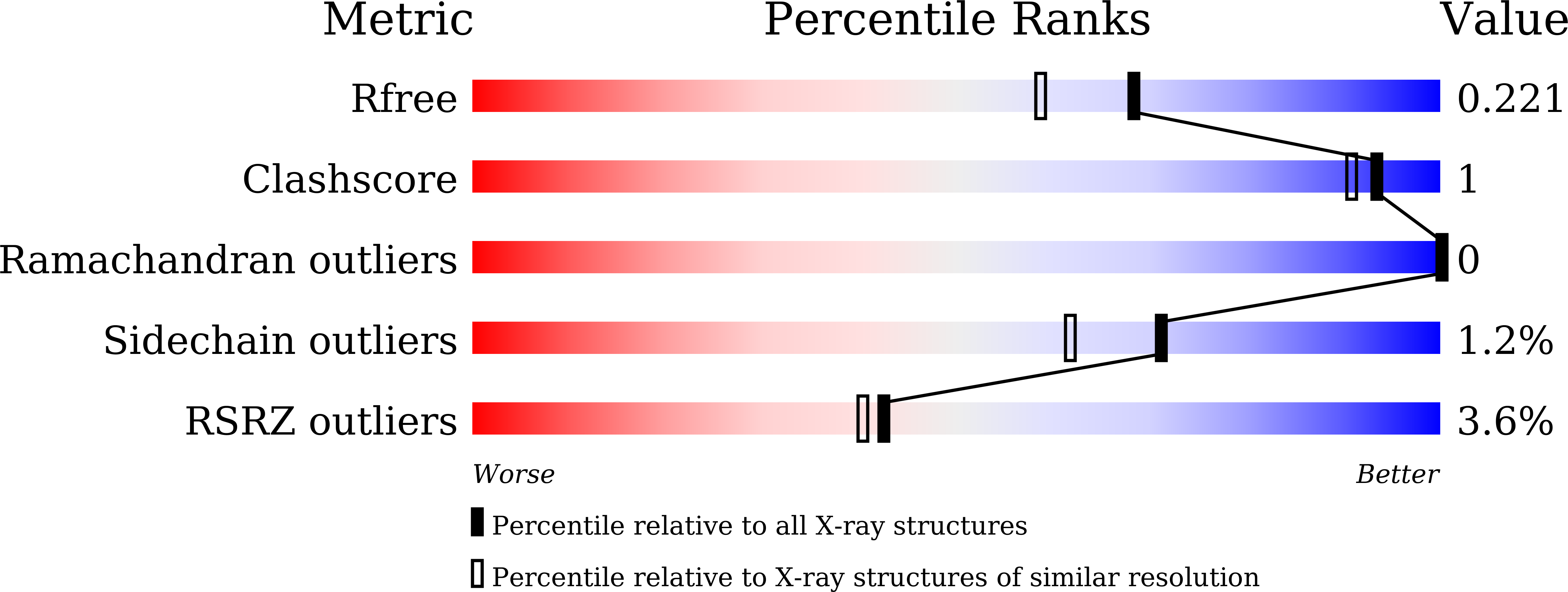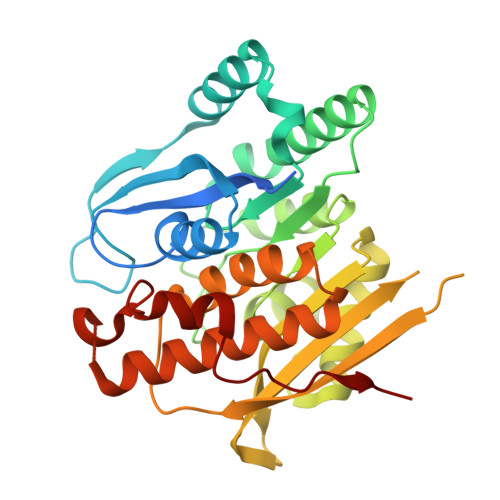Structural attributes and substrate specificity of pyridoxal kinase from Leishmania donovani.
Are, S., Gatreddi, S., Jakkula, P., Qureshi, I.A.(2020) Int J Biol Macromol 152: 812-827
- PubMed: 32105687
- DOI: https://doi.org/10.1016/j.ijbiomac.2020.02.257
- Primary Citation of Related Structures:
6K8Z, 6K90, 6K91, 6K92 - PubMed Abstract:
The enzyme pyridoxal kinase (PdxK) catalyzes the conversion of pyridoxal to pyridoxal-5'-phosphate (PLP) using ATP as the co-factor. The product pyridoxal-5'-phosphate plays a key role in several biological processes such as transamination, decarboxylation and deamination. In the present study, full-length ORF of PdxK from Leishmania donovani (LdPdxK) was cloned and then purified using affinity chromatography. LdPdxK exists as a homo-dimer in solution and shows more activity at near to physiological pH. Biochemical analysis of LdPdxK with pyridoxal, pyridoxamine, pyridoxine and ginkgotoxin revealed its affinity preference towards different substrates. The secondary structure analysis using circular dichroism spectroscopy showed LdPdxK to be predominantly ¦Á-helical in organization which tends to decline at lower and higher pH. Simultaneously, LdPdxK was crystallized and its three-dimensional structure in complex with ADP and different substrates were determined. Crystal structure of LdPdxK delineated that it has a central core of ¦Â-sheets surrounded by ¦Á-helices with a conserved GTGD ribokinase motif. The structures of LdPdxK disclosed no major structural changes between ADP and ADP- substrate bound structures. In addition, comparative structural analysis highlighted the key differences between the active site pockets of leishmanial and human PdxK, rendering LdPdxK an attractive candidate for the designing of novel and specific inhibitors.
Organizational Affiliation:
Department of Biotechnology and Bioinformatics, School of Life Sciences, University of Hyderabad, Hyderabad 500 046, Telangana, India.





















